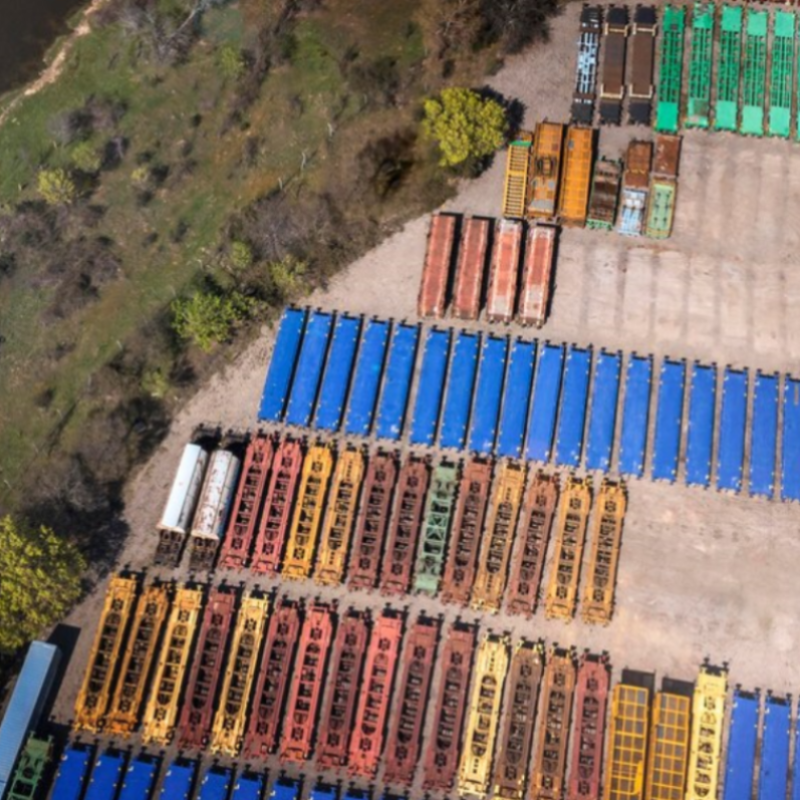
ISO 28001 Port & Customs Operations Security Set — Introduction and Scope
This guide provides a practical, risk-based security set aligned with ISO 28001 for port and customs operations. The objective is to identify physical and operational security weaknesses across road, sea, and rail links, mitigate their impact, and manage them with auditable records.
The guide includes processes and control sets for threat modeling, container seal management, route and driver safety, X-ray/inspection integration, emergency protocols, supplier security assessment, incident reporting & forensic records, insurance compliance, business continuity, and performance metrics.
Scope
- Physical security: gate control, site perimeter security, warehouse/depot access.
- Operational security: cargo handling, shipment integrity, monitoring & traceability.
- Technical integration: X-ray/NII, sensors, telematics, and incident management software.
Management Commitment
Security objectives, resource allocation, and delegation of authority must be formally approved by top management and monitored through performance review meetings.
Principles
- Risk priority: Resource allocation based on a probability–impact matrix.
- Defense in depth: Joint design of physical, technical, and administrative controls.
- Continuous improvement: Data-driven reviews, CAPA actions, and standard updates.
Threat Modeling: Scenarios, Prioritization, and Validation
Threat modeling is a systematic study that answers who can cause harm, where, and how. Internal (employee/contractor) and external (organized crime, sabotage) threats are addressed within the process–asset–control triangle.
Method & Steps
- Process map: Chart gates, ramps, yards, warehouses, and information flows.
- Asset inventory: Containers, seals, equipment, critical data, and high-value cargo.
- Attack vectors: Seal breach, identity fraud, GPS/route manipulation, insider assistance.
- Risk scoring: Likelihood × Impact, considering existing controls and gaps.
- Validation: Tabletop exercises, on-site walkthroughs, and red-team trials.
Example Scenarios
- Seal violation: Arrival-time number mismatch, cable slack, inconsistent visual marks.
- Unauthorized vehicle/driver: Yard entry by bypassing identity checks.
- Equipment sabotage: Disabling X-ray or creating camera blind spots.
Using the Outputs
Modeling outputs must directly inform the audit plan, sampling rates, seal policy, and training content.
Container Seal Management: Integrity and Traceability
Seal management is the most visible evidence layer of shipment integrity. The policy should cover seal type selection, application, recording, inspection, and opening.
Seal Types & Policy
- HSS bolt seals (ISO 17712): Mandatory for high-value cargo.
- Cable seals: Adjustable and suitable for multi-stop/transshipment routes.
- Tamper-evident plastic seals: Economical for low/medium risk with secondary checks.
Apply–Record–Inspect
- Assignment: Link the seal serial number with the container and shipment.
- Application: Authorized staff plus a “four-eyes” verification.
- Recording: Number, date–time, location, operator, and photo.
- Transit checks: Visual and, when needed, RFID/NFC verifications at controlled entries/exits.
- Opening: Supervised cutting at destination and condition logging.
Violation Indicators & Response
Number mismatch, cable looseness, epoxy/burr marks, and lock-seat scratches are red flags. Move the container to an isolation area, perform a joint survey, and preserve the chain of custody.
Route & Driver Safety: Managing Risk on the Road
The road phase is the most variable risk area of door-to-door transport. The framework consists of preconditions, real-time monitoring, human factors, and incident response.
Preconditions
- Driver verification: Identity, license class, psychotechnical fitness, training records.
- Vehicle readiness: GPS/telematics, door sensor, in/out cameras, panic button.
- Route plan: Risk-scored route and pre-approved rest points.
Real-Time Monitoring & Thresholds
Telematics generate alerts for speed, route deviation, door opening, and unplanned stops. If a critical deviation remains unverified, the vehicle is routed to the nearest safe point and escalation begins.
Human Factors
- Mandatory breaks and driving-shift limits.
- In-cab distraction/lane-departure warnings.
- Post-incident coaching and refresher training.
High-Risk Responses
Unplanned stop > 5 minutes, door opening outside safe zones, or tailing suspicion triggers immediate call, location verification, and law-enforcement coordination.
X-Ray & Inspection Integration: Risk-Based Approach
X-ray and other scanning technologies do not provide security on their own; they become effective when combined with risk-based prioritization and inspection plans. According to ISO 28001, scanning includes device qualification, operator training, reporting, and record retention.
Risk-Based Screening
- High-risk shipments: 100% scanning.
- Medium-risk: Increased sampling.
- Low-risk: Random sampling.
Device Management
- Calibration according to manufacturer instructions.
- Performance Test Objects (PTO) checks.
- Maintenance and failure logs.
Operator Competence
Operators must undergo regular training, blind tests, and dual-review of images, with periodic analysis of false negatives.
Emergency and Communication Protocols
Quick response and clear communication are essential for emergency management. Protocols cover command structure, notification flow, evacuation plans, and evidence chain procedures.
Command Structure
- Incident Command Center: Composed of security, operations, and communication representatives.
- Role cards: Responsibilities and contact details documented for each role.
- Backups: Delegation system activated when the main decision-maker is absent.
Notification Timing
First 15 minutes: situation assessment; 30 minutes: internal notification; 60 minutes: authority/law enforcement notification. Media communication is managed with pre-approved scripts.
Supplier Security Assessment
Suppliers are critical links in the chain. Under ISO 28001, supplier security assessment includes selection, contracting, auditing, and continuous monitoring.
Pre-Selection Analysis
- Review of past incidents and security cases.
- ISO and accreditation certifications.
- Financial stability analysis.
Contract Conditions
Contracts must clearly define minimum security standards, audit rights, and penalties for non-compliance.
Monitoring
- On-site inspections and camera surveillance checks.
- Unannounced spot checks.
- Monthly evaluations using KPIs.
Incident Reporting and Forensic Records
Every security incident, whether minor (seal breach) or major (smuggling attempt), must be recorded and analyzed. ISO 28001 bases reporting on transparency, traceability, and evidential value.
Incident Reporting Steps
- Detection: Immediate log entry by the first observer.
- Initial Response: Security team secures the area.
- Documentation: Detailed 5W1H record (what, where, when, who, how, why).
- Notification: Inform senior management and authorities.
Forensic Records Management
Camera footage, seal remnants, GPS logs, X-ray images, and witness statements are stored as part of an evidence file. Access is controlled through a chain-of-custody to maintain legal validity.
Insurance Compliance
Port and customs security practices are directly linked to insurance policy requirements. Insurers assess the effectiveness of security controls when determining premiums and coverage.
Policy Requirements
- Mandatory measures: Cameras, GPS tracking, and seals may be required.
- Notification periods: Incidents must be reported within specified timelines.
- Exclusions: Losses due to security failures may be excluded if preventive measures were lacking.
Compliance Strategies
Reporting systems must align with insurer formats. Annual security drills can provide advantages in policy renewals.
Business Continuity Connection
Security and business continuity are interdependent systems. Security breaches lead not only to losses but also to operational disruptions. ISO 28001 should be integrated with the ISO 22301 Business Continuity Management System.
Connection Points
- Risk assessment: Security risks must be embedded in Business Impact Analysis (BIA).
- Emergency planning: Scenarios such as sabotage, theft, and IT system attacks must be covered.
- Resource continuity: Backup strategies for critical staff, equipment, and infrastructure.
Testing & Exercises
Security and business continuity drills should be conducted together, e.g., seal breach + fire scenario.
Performance Metrics
The effectiveness of ISO 28001 implementation must be tracked through measurable KPIs. These metrics provide both outcome data and early warnings.
Lagging KPIs
- Seal breach rate.
- Incident frequency per 10,000 TEU.
- False negative rate in X-ray inspections.
- Loss/damage costs per shipment.
- Operational downtime duration.
Leading KPIs
- MTTD / MTTR values.
- Route deviation ratio.
- Geofence violations.
- Operator competency scores.
- Training completion percentage.
Improvement Cycle
KPI deviations must be analyzed with root cause methods, corrective actions assigned, and improvements measured.
Internal Audit & Inspection Readiness
Internal audits verify that security controls function as intended. The audit program must be risk-based, with more frequent reviews of critical processes.
Audit Program
- Quarterly audits of seal management and high-risk corridors.
- Combination of random and targeted sampling.
- Independent, competent auditors.
Managing Findings
Findings are gathered through interviews, record reviews, and observations. They are classified as critical/major/minor with defined closure timelines.
Training & Awareness Programs
The sustainability of security performance depends on people adopting the right behaviors as habits. Training must be role-based and tailored for operators, drivers, security staff, and managers.
Role-Based Training
- Operations staff: Seal application, record integrity, spotting tampering signs.
- Drivers: Route safety, geofence violation procedures, emergency reporting.
- X-ray operators: Image interpretation, false-negative reduction, PTO application.
- Managers: KPI analysis, resource allocation, and crisis communication.
Applied & Scenario-Based Learning
Tabletop exercises, driving simulations, and controlled red-team trials reinforce awareness. Effectiveness is measured with pre/post tests and on-site observations.
Awareness Campaigns
Visual posters, micro-learning bulletins, and short video clips reinforce critical messages. “Safe behavior” examples can be rewarded to strengthen culture.
Digitalization & System Integration
For maturity, security processes require seamless data flow. TMS, WMS, seal stock systems, telematics, X-ray archives, and incident management tools must be linked under a single data model.
Architecture Principles
- Unified data model covering shipment, container, seal, and inspection results.
- API-based integration with real-time alerts (webhooks) and ETL for delayed reporting.
- Access authorization with audit trail and time stamps.
Analytics & Alerts
Rule-based triggers (e.g., unplanned stops, door opening in unsafe zones) combined with machine learning anomaly detection feed into dashboards. Escalations are triggered automatically for critical breaches.
Reporting
Standard formats: real-time operational dashboard, weekly management summary, and monthly audit pack. Data quality indicators (completeness, accuracy, latency) must be monitored.
Compliance Matrix & Documentation
The compliance matrix shows how each ISO 28001 requirement is addressed through procedures, records, and responsibilities. It is the key reference during audits.
Document Hierarchy
- Policies: Management commitment, objectives, and scope.
- Procedures: Seal management, driver safety, X-ray inspections, emergency response.
- Work instructions: Shift-level steps with visuals and sample forms.
- Records: Forms, logs, photos, videos, digital signatures.
Version Control
All documents must follow version control. Changes must include reason, impact assessment, and training needs. Outdated versions are archived, and only the current one should be active on-site.
Evidence Sets
- Internal audit reports and CAPA closure evidence.
- X-ray calibration results and operator training records.
- Seal number–photo–timestamp matching samples.
- Incident logs, chain-of-custody records, and insurance correspondences.
Conclusion
By implementing the ISO 28001 Port & Customs Operations Security Set, organizations can ensure measurable protection against theft, sabotage, and smuggling. Through risk-based controls, evidence-based audits, and continuous improvement cycles, both operational safety and business continuity are reinforced. This framework builds trust across the logistics chain and aligns security efforts with insurance, compliance, and performance targets.
